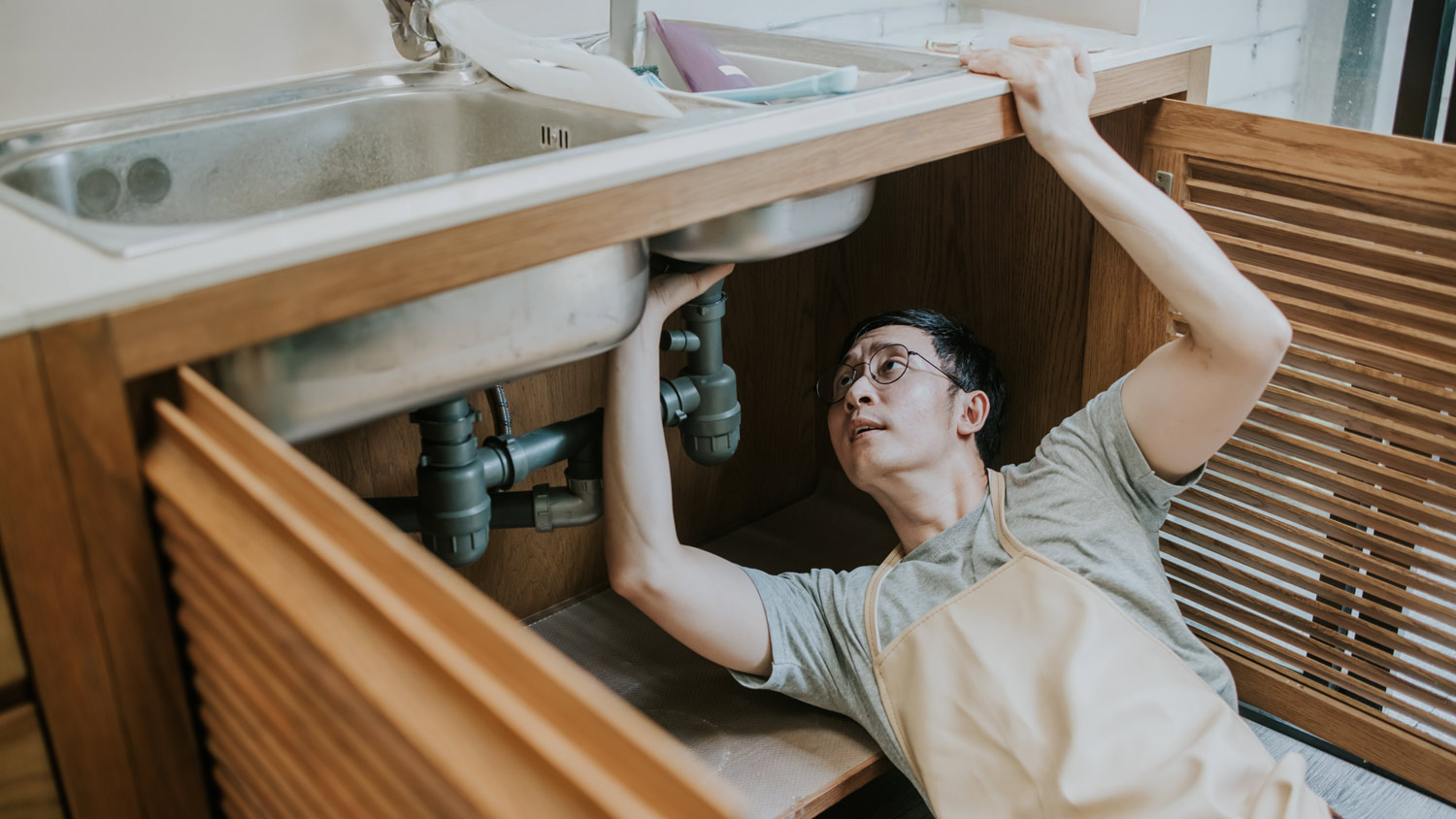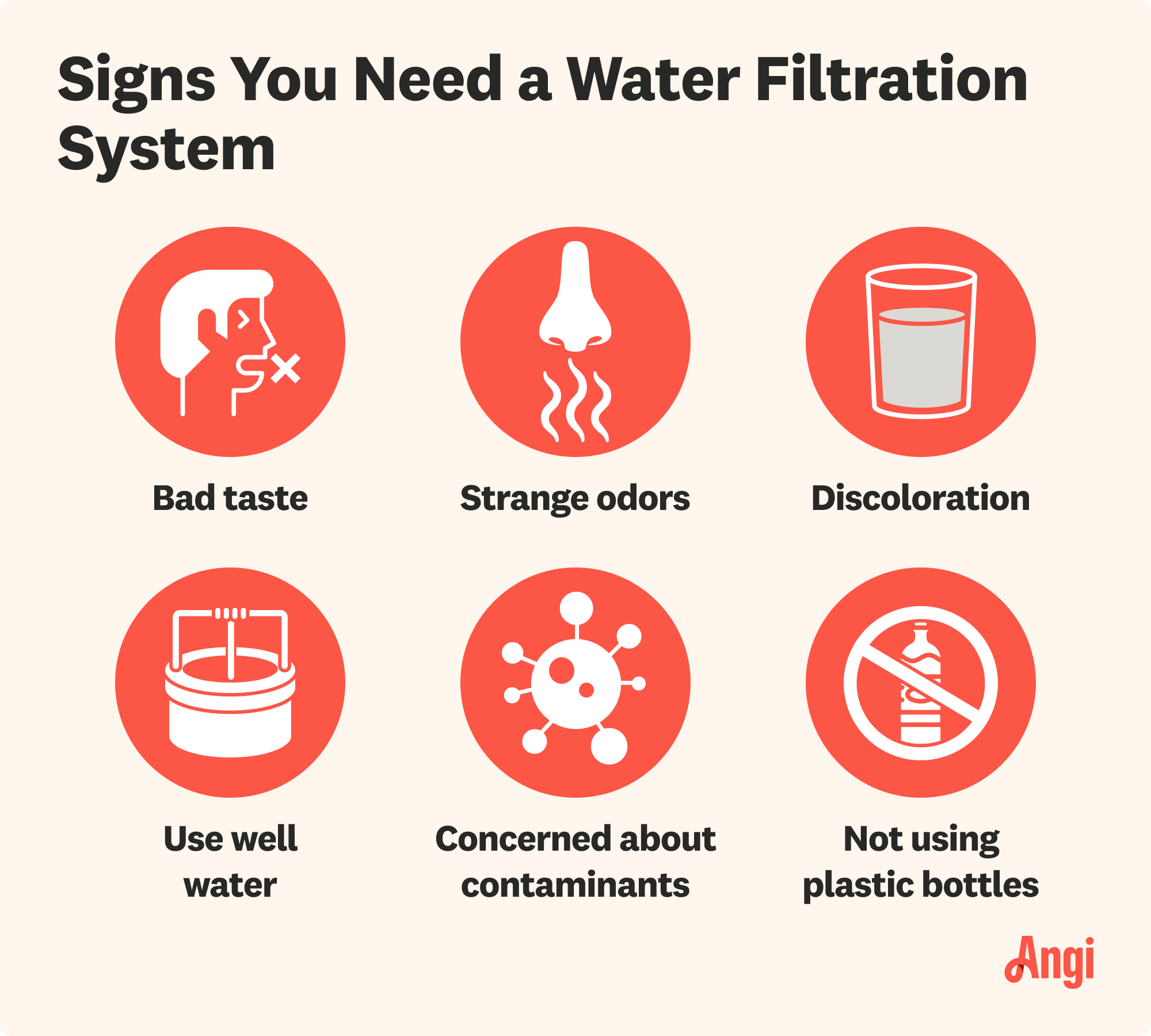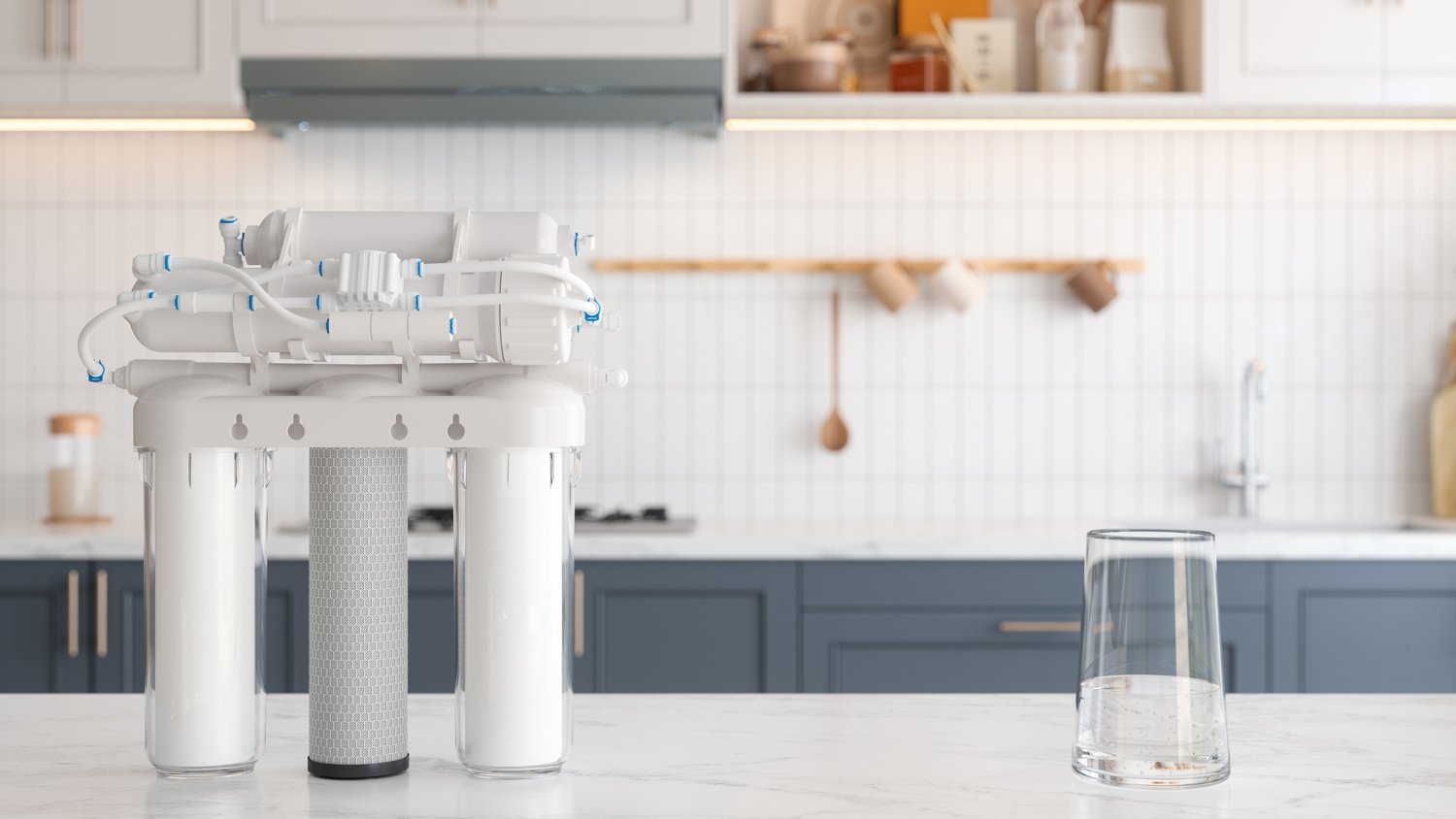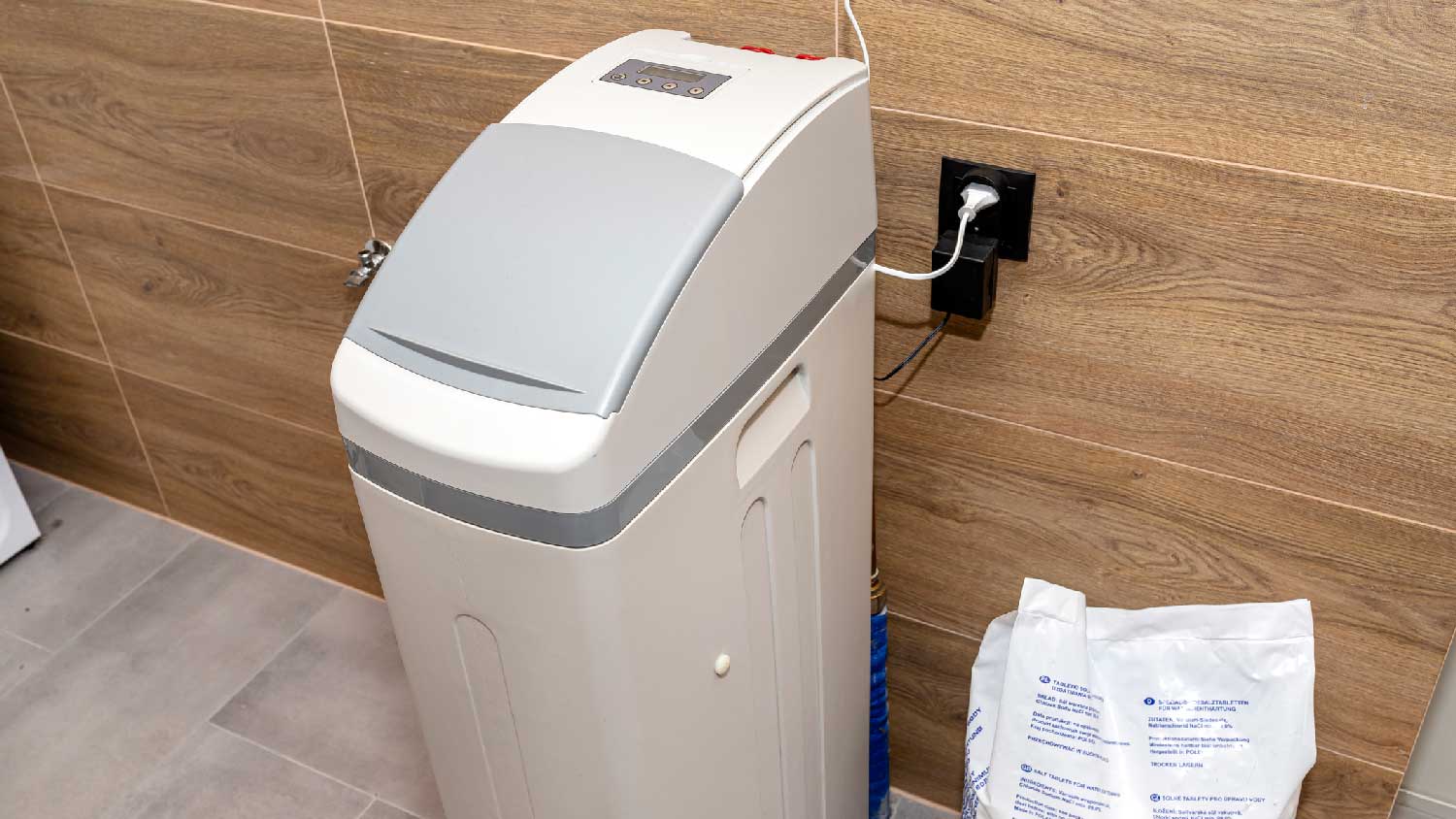How Much Does It Cost to Install an Under-Sink Water Filter? [2025 Data]
The average cost to install an under-sink water filter is $550, but it can range between $300 and $1,250, depending on the type and size your pro installs.


Under-sink water filters cost less than whole-house systems, but they only serve a single faucet.
Several types of under-sink water filters exist. The kind you choose is the most significant cost factor.
Expect to pay more for an under-sink water filter if you desire a higher level of filtration than average.
The average cost to install an under-sink water filter is $550, though you can spend between $100 and $3,000, depending on your needs. Under-sink water filters are more cost-effective than whole-house water filtration systems, and can provide similar water filtration results. However, they only serve a single faucet location. Learn the cost factors that will impact what you pay for an under-sink water filter.

Under-Sink Water Filter Cost Factors

The type and size of the under-sink water filtration system you choose will have the biggest impact on its price. However, several other factors will also figure into the calculation.
Types
Many types of water filters exist. The most common under-sink varieties include carbon, multi-stage, reverse osmosis (RO), and systems that combine more than one type of filtration in the same unit. For example, many carbon filters come with a sediment filter as a first stage, while many RO systems include one or more stages of carbon filtration.
Reverse osmosis systems cost more to purchase and install than the other types, while ion exchange units act as point-of-use water softeners and cost less to install. UV light systems often involve other filtration methods before the UV purification happens, which can significantly increase their installation cost.
| Filter Type | Average Cost Range |
|---|---|
| Sediment | $100–$300 |
| Carbon | $200–$600 |
| Multi-stage | $200–$1,200 |
| Ion exchange | $100–$350 |
| Ceramic | $200–$700 |
| Reverse osmosis | $300–$2,000 |
| UV light | $500–$3,000 |
Capacity
The amount of water you need per minute will affect the cost of your under-sink water filtration system. Water flow measurements are in gallons per minute or GPM. Common GPM rates for residential water filters are between 0.5 and 2.5.
GPM rates can be somewhat deceptive. The higher the flow rate, the less filtration the water undergoes. Under-sink RO systems tend to have lower flow rates, but a high level of filtration.
| Flow Rate | Average Minimum Cost |
|---|---|
| 0.5 | $400 |
| 1.0 | $300 |
| 1.5 | $200 |
| 2.0 | $150 |
| 2.5 | $50 |
Included Supplies
Many under-sink water filters come with everything you need to tap into your home's plumbing and start enjoying filtered water. On the other hand, many systems come only as the filter housing. This means that in addition to the housing and connections, you'll have to purchase the faucet and sometimes the filters to complete your system, which will add to the installation costs.
Labor
A plumber can install an under-sink water filter, as well as help you decide which system is best for your needs based on your family's consumption and the quality of your water. Plumbers cost between $45 and $200 per hour for installations and other work, which will affect the cost of installing your system.
Prep
Understanding the current quality of your home's water is essential to help you choose the best under-sink water filtration system for your needs. Expect to spend between $10 and $400 on water testing, depending on whether you choose a DIY kit or have water samples sent to a lab for deeper analysis.
Location
Where you live can impact the total installation cost for your under-sink water filter system. Expect to spend more to cover the cost of labor in locations where the cost of living is high and less in other areas. Additionally, because you're installing a plumbing fixture, some municipalities will require a plumbing permit for an under-sink system, which will include a minor fee.
Under-Sink Water Filter Ongoing Costs
Installing an under-sink water filter isn't a one-and-done cost. There are a couple of things to consider regarding ongoing expenses.
Maintenance
Virtually all under-sink water filter systems require regular filter changes and upkeep to function properly. Under-sink water filter replacements cost between $15 and $300 each, and replacements are necessary every six months to five years, depending on the filter type and how often you use your system.
Operating Costs
Not all under-sink water filter systems require electricity. However, many RO systems and all UV light systems will require at least a small amount of it. While the cost is minimal, you may notice a small increase in your monthly electric bill.
DIY Under-Sink Water Filter Installation vs. Hiring a Pro
DIY under-sink water filtration installation is a manageable task. Many under-sink systems come with relatively simple installation instructions. Performing the job yourself can save you the cost of installation labor, which is between $45 and $200 per hour.
However, because the task requires working with your home's plumbing, having some solid DIY skills is necessary. Additionally, if you install a system that requires electricity where none exists, we highly recommend hiring a professional for the job.
Because the project is relatively small and installation costs are worth the added security of knowing the work is correct and up to code, most homeowners choose to hire a nearby plumber or local water-softener professional to handle the work.
Cost of Common Under-Sink Water Filter Add-Ons
While you're hiring a professional for your under-sink water filter installation, it's a good time to knock off a few more items from your to-do list.
Water softener installation cost: $200–$6,000
Plumbing inspection cost: $100–$500
Plumbing repair cost: $175–$450
Tips to Reduce Cost While Installing an Under-Sink Water Filter
It's true that you can save money, at least in the short term, by installing your own under-sink water filter system. However, that's not the best option for every homeowner. Despite their smaller size compared to whole-house systems, they're still complex appliances that require precise installations, and working with plumbing and sometimes electrical isn't for everybody.
The best way to manage costs when installing an under-sink water filter system is to test your home's water quality and what's in it, and work with a professional to find the most cost-effective way to treat the specific impurities that exist in your water.
How Angi Gets Its Cost Data
Home is the most important place on earth, which is why Angi has helped more than 150 million homeowners transform their houses into homes they adore. To help homeowners with their next project, Angi provides readers with the most accurate cost data and upholds strict editorial standards. We extensively research project costs to develop the pricing data you see, so you can make the best decisions for you and your home. We rely on reputable sources, including the U.S. Bureau of Labor Statistics, academic journals, market studies, and interviews with industry experts—all to ensure our prices reflect real-world projects.
Want to help us improve our cost data? Send us a recent project quote to costquotes@angi.com. Quotes and personal information will not be shared publicly.
Frequently Asked Questions
Whether an under-sink water filter is worth it depends heavily on what's in your home's water and how you use water in your home. Compared to the cost of a whole-house filter system, an under-sink version can save hundreds or thousands of dollars. However, under-sink versions only work at a single location. Homeowners who find that under-sink systems are worth the cost often use them primarily for drinking and cooking purposes.
How long your under-sink water filters last depends on the type of filter and how often you use them. Cartridge-type carbon filters last between six and 12 months, while high-quality RO filters can last up to five years. You can expect a well-maintained system as a whole, apart from the filters, to last between 10 and 15 years.















